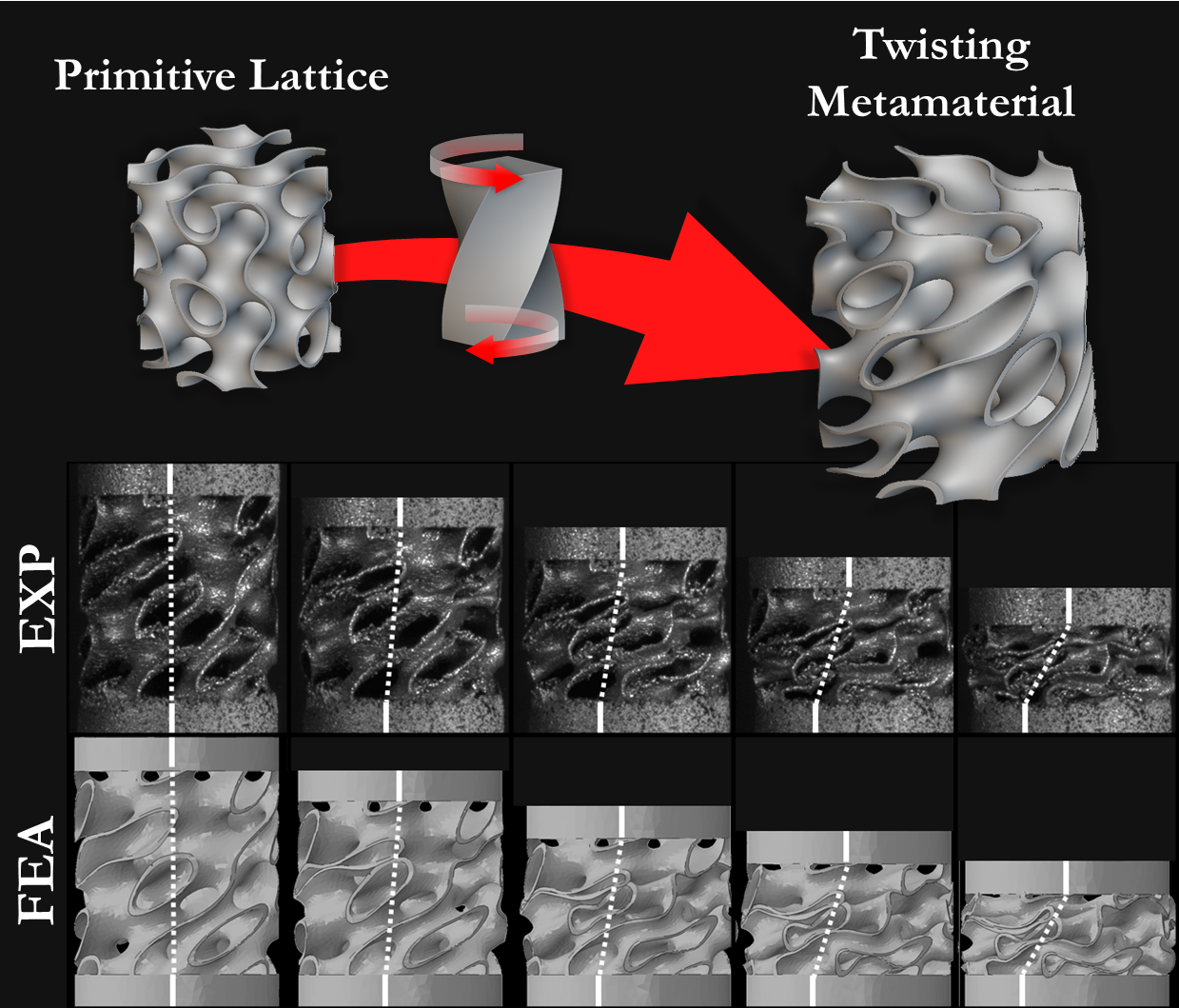3D-printed material breakthrough could enable new twist for vehicle safety
Published: 24 October 2025
A new form of 3D-printed twisting metamaterial which can mitigate the effects of impact could lead to improved crash protection for vehicles in the years ahead.
A new form of 3D-printed twisting metamaterial which can mitigate the effects of impact could lead to improved crash protection for vehicles in the years ahead.
Researchers from universities in Scotland and Italy are behind the development of the material, which has a unique lattice shape that allows it to twist into itself to effectively protect against a range of impact types and severities.
The team’s ‘adaptive twisting metamaterials’, outlined in a paper published in the journal Advanced Materials, take a different approach to impact protection materials currently in use.

Unlike conventional foams or crumple zones, which provide predetermined resistance to impacts, the team’s material response to blows can be mechanically controlled, thereby altering its energy absorption. They can be fine-tuned to provide stiffer resistance to heavy collisions or softer cushioning for lighter impacts.
The materials are made from steel using additive manufacturing, a process better known as 3D printing. The process gives the team fine-grained control over the material’s architecture, allowing them to weave a complex, highly porous shape known as a gyroid lattice throughout it.
When the material is compressed by an external force, it twists in a corkscrew-like motion, absorbing the impact energy. In laboratory experiments, the team tested three versions of the material to assess their response to two types of loading: rapid impacts and slower, steadily increasing strains.
When the metamaterial was constrained from twisting at all in response to impacts, it provided maximum stiffness and absorbed the most energy - 15.36 joules of energy per gram of the material. When the material was allowed to twist freely instead, its stiffness and energy absorption decreased by approximately 10 percent. In the material’s third configuration, it was forced to over-twist, reducing energy absorption by 33 percent. The results show that the material has the potential to provide a range of protection, from rigid shielding to softer energy absorption.
The team’s real-world tests are supported by a comprehensive theoretical and computational model which can accurately predict the complex behaviour of twisting gyroid lattices under different strain rates. For accurate numerical–experimental alignment, geometric imperfections introduced during additive manufacturing were quantified by integrating micro-CT reconstructions of the printed lattices.
Professor Shanmugam Kumar of the University of Glasgow’s James Watt School of Engineering led the research. He said: “The protective materials used in most vehicles today are static, designed for specific impact scenarios and unable to adapt to varying conditions.
“This study introduces adaptive twisting metamaterials as a new class of metamaterials that don’t require any complex electronics or hydraulics to adapt. Instead, they can adapt simply through mechanical control of rotation. When we apply compression, the gyroid lattice translates it into twist, and by changing the boundary conditions, we can tune the energy absorption characteristics. These materials can adapt and change their own characteristics depending on the impact type and severity to mitigate effects.
“We believe the material could find applications in both automotive and aerospace safety in the future, providing a single new class of material capable of adapting to different needs as required. It could also support the development of novel forms of energy harvesting, by converting impacts into rotational kinetic energy.”
Researchers from the Polytechnic University of Marche, the University of L’Aquila and the National Institute for Nuclear Physics in Italy contributed to the research and co-authored the paper. The team’s paper, titled ‘Adaptive Twisting Metamaterials’, is published in Advanced Materials.
First published: 24 October 2025

